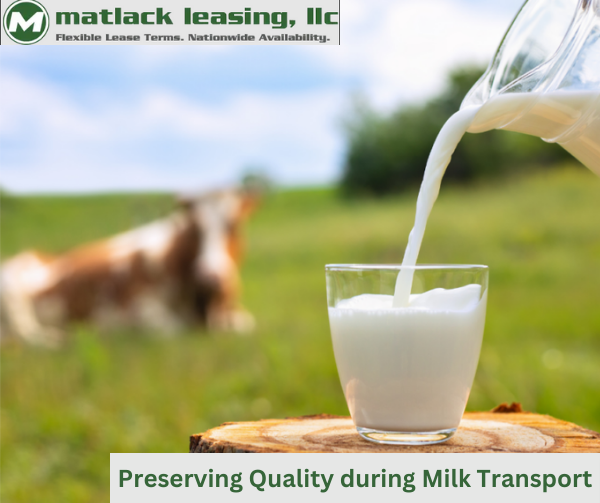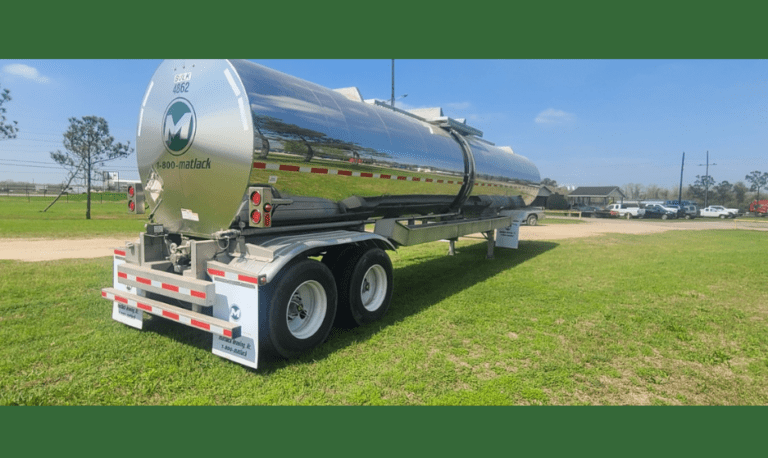We recognize that in the world today, that milk may be derived from many sources. Cow milk (and in some locations goat milk) are by far the most common. However, across the globe popular sources of milk may include: almond milk, oat milk, and soy milk. Regardless of the source, milk must be transported from an agricultural origin (farm, orchard, or plantation) to the consumer quickly and safely to preserve freshness. Here we are going to focus on the dairy milk supply chain and the challenges of transporting this essential food product.
Regulating the Dairy Milk Supply Chain
The milk supply chain consists of milk production, milk transport, processing, packaging, distribution, and storage. Milk has a relatively short shelf life in its raw form. Midwest Dairy reported that most milk is marketed and consumed within a 100 miles of the farm where it was produced. The milk travels from farm to shelf in as little as 48 hours.
The milk supply chain, including temperature monitoring, is regulated by the Food and Drug Administration (F.D.A). Key regulations include the US Pasteurized Milk Ordinance which was passed in 1987. This regulation banned the interstate sale or distribution of raw milk and required that all milk sold across state lines must be pasteurized. The FDA with the Food Safety and Modernization Act of 2010 (FSMA) proposed strict regulations concerning sanitation in dairy transportation. In 2016, the FSMA Sanitary Transportation Rule was ratified and included a number of safeguards in dairy logistics including temperature control and sanitation of vehicles.
A few examples of the regulatory requirements for cold chain logistics for dairy products include:
- Refrigerated / insulated trucks, tanker trailers, or containers
- Tracking of product and carrier data through the use of bar codes and GPS
- Temperature data logging of product history
- Recordkeeping and documentation of cold chain procedures
Errors can be costly and those responsible are often held accountable. Consumers of milk are often infants and children.
The Importance of Temperature Control & Sanitation for Milk Transport Quality
The milk supply chain requires strict temperature controls and cold chain logistics. The added logistical complexity of maintaining cold temperatures is required to prevent spoilage of the product during transit.
The most critical portion of the milk supply chain is the transport of raw milk from the farm to the processing plant. Raw milk may contain many different types of bacteria (including Clostridiales, Streptococcus, and Staphylococcus strains). Without cold temperature controls the concentration of these microbes will increase to potentially dangerous levels. Research conducted by Clemson University concluded that the optimal temperature control should be below 40 degrees. Pasteurization kills these microbes, but cold temperatures are still required to preserve product quality.
Frequent sanitation of containers for milk transport and maintaining cold temperatures during transportation and storage means that the milk will maintain quality and safety for the consumer. Of course, the faster the milk is transported, especially raw milk, the better!
Milk Transport Solution for Large Quantities- Food Grade Tanker Trailers
Milk transportation and dairy logistics companies meet the challenges of milk transport with the use of food grade tankers modified to maintain consistently cold temperatures. Food grade tankers offer the combination of temperature stabilizing equipment, and stainless steel interiors which are easy to clean and sterilize.
Recent model year food tankers transport larger volumes of milk and reduce the number of trips the milk transporter has to make in order to move quantities of milk from the farm to processing. The size of milk tankers varies from state to state, as weight limits allow. According to Mark Stephenson at Cornell University, twenty-six states have an 80,000 gross vehicle weight (GVW) for milk tankers, nineteen states have a GVW of 105,000 pounds or more, while Michigan tips the scales with 115,000 GVW. Milk transport equipment can range from double axle vehicles to tractor-trailers. Stephenson also notes that 80 percent of current milk trucks are tractor-trailers that move 6,000 – 8,000 gallons of milk, while the remaining 20 percent is hauled by tank chassis which carry approximately 5,500 gallons of product.
Food Grade Tanker Trailers by Matlack Leasing, LLC
Meeting milk quality expectations during transport- from when it leaves the farm to when it is received for processing or retail distribution, can be satisfied by DOT 407 food grade tankers. These tanker trailers are manufactured with stainless steel construction to withstand sterilization processes and may be modified for temperature regulation to safely transport dairy products.
At Matlack Leasing, we carry the highest quality tank trailers and we currently have food grade DOT 407 tankers available to transport up to 7,000 gallons with each payload. Speak with one of our expert team members at Matlack Leasing, LLC at 1-800-MATLACK to inquire about availability of food grade tankers for consumable liquids.
Sources
“Farm Life FAQ.” Midwest Dairy, . Accessed 4 April 2023.
“Moving Milk and More: Dairy Logistics | USA Truckload Shipping.” Freight Shipping | USA Truckload Shipping, 24 July 2019, . Accessed 5 April 2023.
Schmutz, Pamela, and EH Hoyle. “Safe Handling of Milk & Dairy Products | Home & Garden Information Center.” HGIC@clemson.edu, 8 March 2007, . Accessed 4 April 2023.
Stephenson, Mark. “How many gallons does the typical milk transport carry? What is their empty and full weights? I am using this to determine bridge specifications in a rural area. – DAIReXNET” DAIReXNET, 16 August 2019, . Accessed 4 April 2023.


